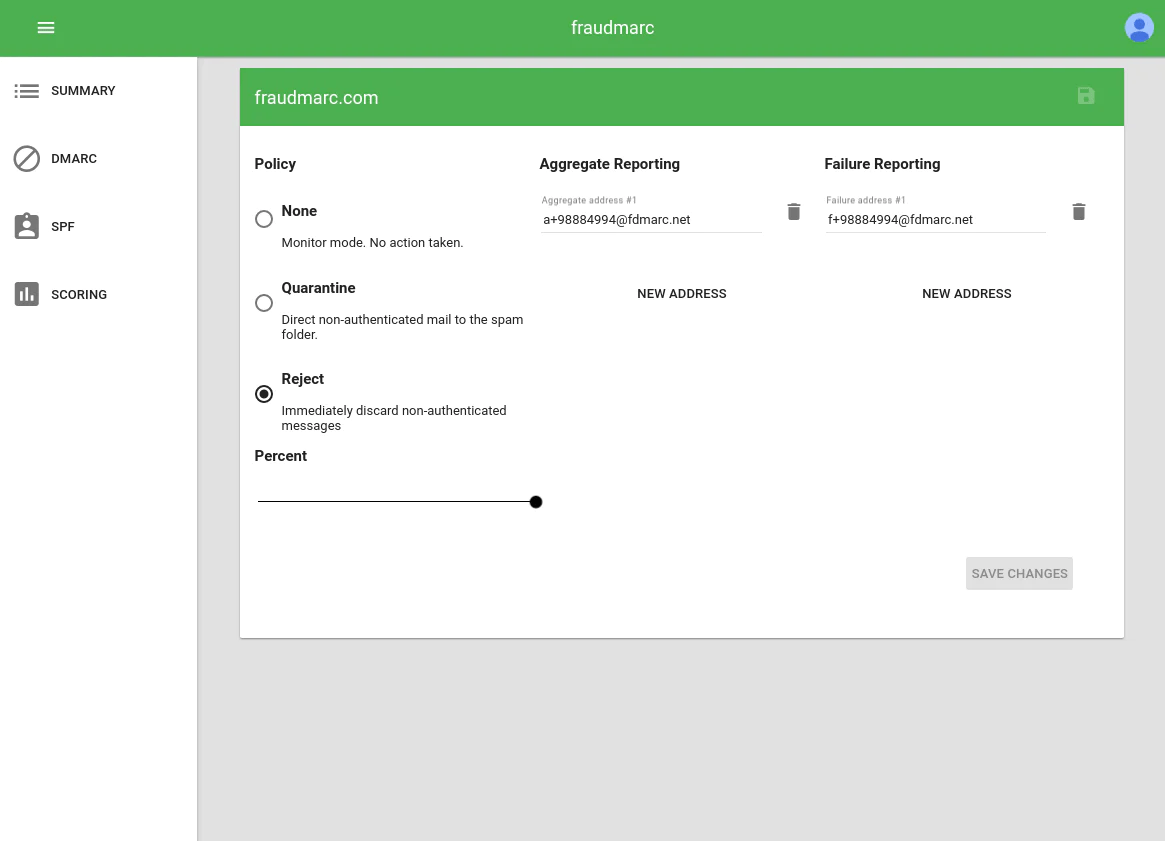User experience
The interface for Fraudmarc is highly functional and provides deep insights, though it can feel a bit technical for new users or those less immersed in DMARC specifics. We've certainly spent time navigating its various sections, which, while powerful, require a learning curve to master all the advanced settings and configurations available.
For users who value comprehensive control and are comfortable with a more detailed dashboard, Fraudmarc offers immense capability. However, if you're looking for a quick, glanceable overview, it might feel a little like trying to drink from a firehose, as it exposes a lot of granular information right upfront.
EmailAuth.io features a cleaner, more intuitive dashboard designed for quick understanding and ease of navigation. We particularly appreciate how straightforward it is to get started and monitor DMARC compliance, offering a less intimidating experience for those prioritizing ease of use over extreme granularity.
The user journey from setup to daily monitoring is smooth, with key metrics and actionable items presented clearly. It feels like the platform actively tries to simplify DMARC for us, which is a welcome relief when you have many other hats to wear. This approach is ideal for teams who need efficient oversight without getting bogged down in minutiae.











































 0 / 5(0)
0 / 5(0)
 0 / 5(0)
0 / 5(0)



